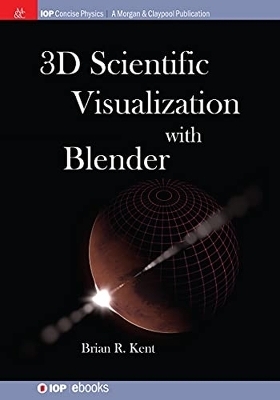
3D Scientific Visualization with Blender
Morgan and Claypool Life Sciences (Verlag)
9781627056113 (ISBN)
- Lieferbar
- Versandkostenfrei
- Auch auf Rechnung
- Artikel merken
This is the first book written on using Blender (an open-source visualization suite widely used in the entertainment and gaming industries) for scientific visualization. It is a practical and interesting introduction to Blender for understanding key parts of 3D rendering that pertain to the sciences via step-by-step guided tutorials. Any time you see an awesome science animation in the news, you will now know how to develop exciting visualizations and animations with your own data.
3D Scientific Visualization with Blender takes you through an understanding of 3D graphics and modeling for different visualization scenarios in the physical sciences. This includes guides and tutorials for:
Understanding and manipulating the interface
Generating 3D models
Understanding lighting, animation, and camera control
Scripting Data import with the Python API
The agility of Blender and its well organized Python API make it an exciting and unique visualization suite every modern scientific/engineering workbench should include. Blender provides multiple scientific visualizations including: solid models/surfaces/rigid body simulations; data cubes/transparent/translucent rendering; 3D catalogs; N-body simulations; soft body simulations; surface/terrain maps; and phenomenological models. The possibilities for generating visualizations are considerable via this ever growing software package replete with a vast community of users providing support and ideas.
Dr. Brian R. Kent is a scientist with the National Radio Astronomy Observatory in Charlottesville, Virginia. His publications and studies in astrophysics and computing include scientific visualizations of a variety of theoretical and observational phenomena. He is interested in visualizing data for scientific analysis as well as reaching a broad audience with the stunning visuals that modern 3D graphics can provide. Dr. Kent received his Ph.D. in Astronomy and Space Sciences from Cornell University. His website is: http://www.cv.nrao.edu/~bkent/. You can also see several of his animations and visualizations on YouTube at: https://www.youtube.com/user/VisualizeAstronomy.
Introduction
The Interface and Windowing Setup
Meshes, Models, and Textures
Lighting
Animation
Point of View: Camera Control
Python Scripting
Projects and 3D Examples
Blender Keyboard Shortcuts
Bibliography
Index
| Reihe/Serie | IOP Concise Physics |
|---|---|
| Verlagsort | San Rafael, CA |
| Sprache | englisch |
| Maße | 178 x 254 mm |
| Gewicht | 333 g |
| Themenwelt | Informatik ► Web / Internet ► Web Design / Usability |
| Naturwissenschaften ► Physik / Astronomie | |
| Technik ► Elektrotechnik / Energietechnik | |
| ISBN-13 | 9781627056113 / 9781627056113 |
| Zustand | Neuware |
| Informationen gemäß Produktsicherheitsverordnung (GPSR) | |
| Haben Sie eine Frage zum Produkt? |
aus dem Bereich


